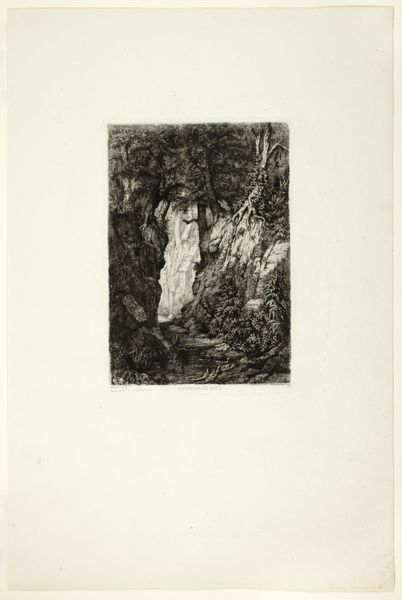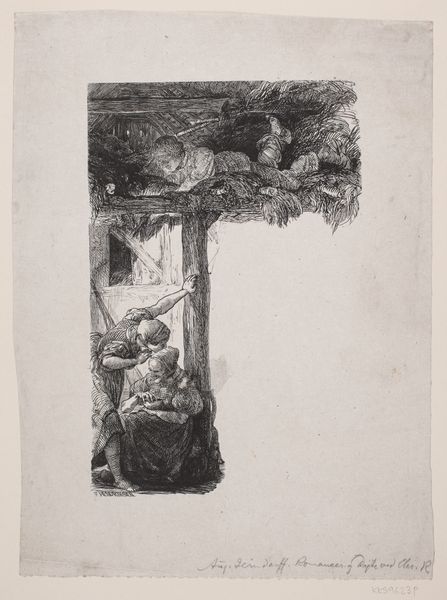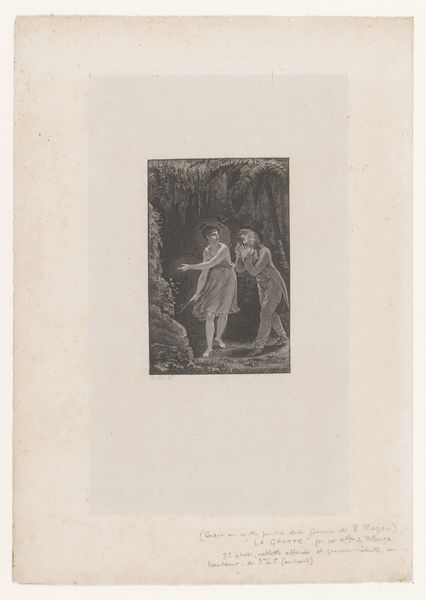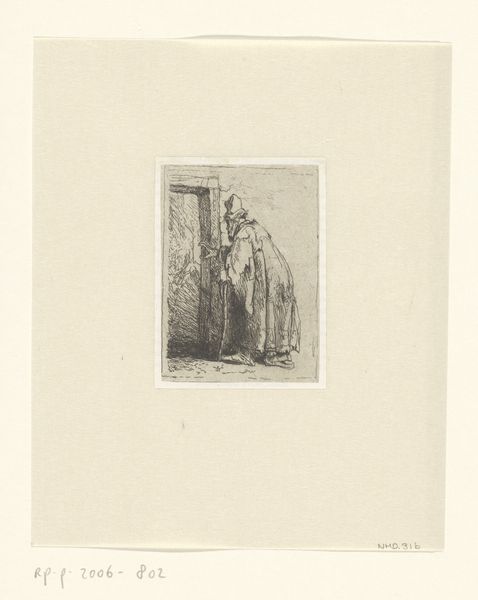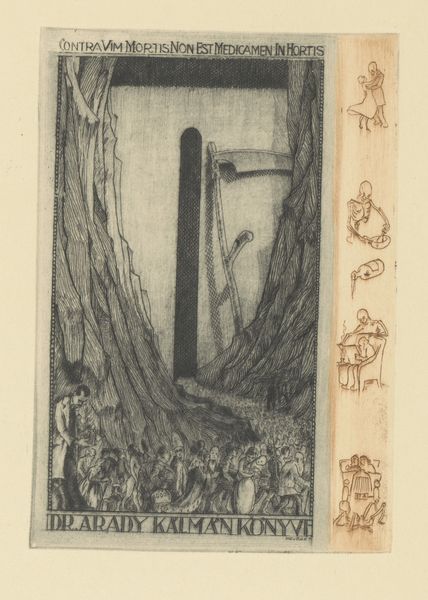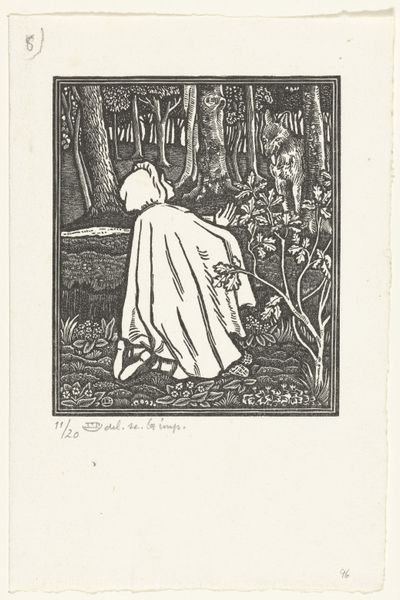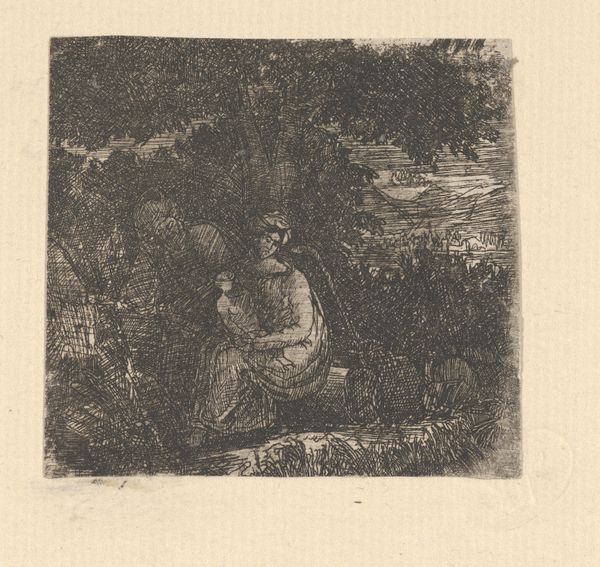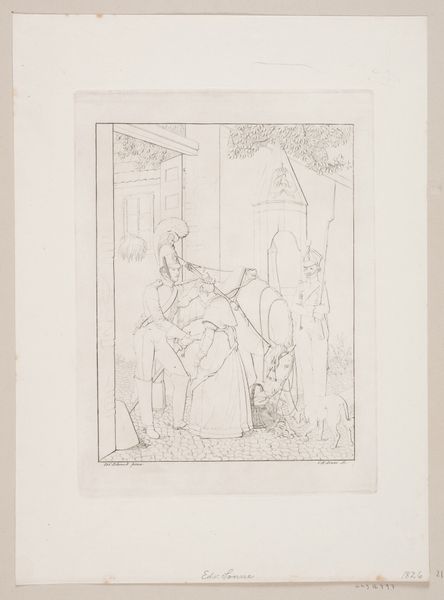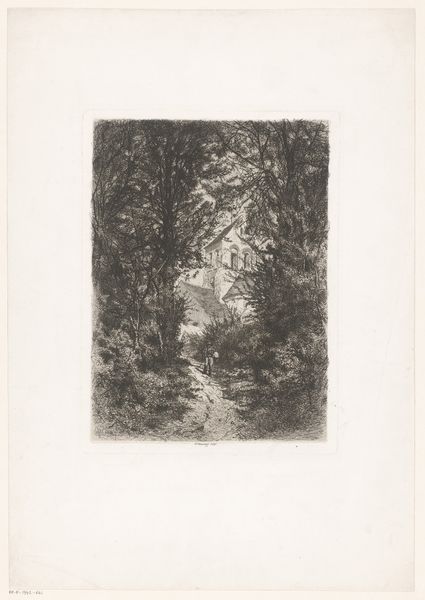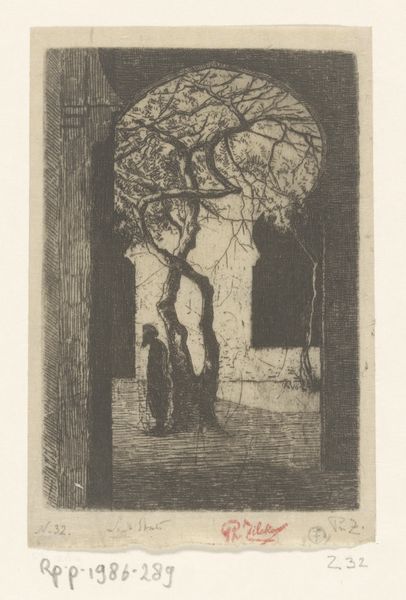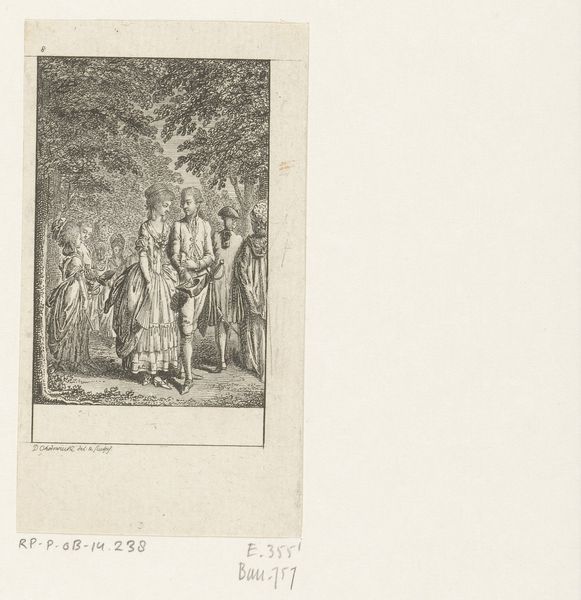
drawing, print, etching
#
drawing
#
negative space
# print
#
etching
#
landscape
#
figuration
Dimensions: 190 mm (height) x 132 mm (width) (bladmaal)
This illustration for "East of the Sun and West of the Moon" was created by H.P. Hansen, likely in the mid- to late-19th century. It's an etching, meaning the image was incised into a metal plate, probably copper or zinc, using acid. Consider the labor involved: the patient drawing with a fine needle, the careful application of the mordant, and the repetitive printing process. It’s a craft-based method, requiring a high degree of skill and precision. The result is a network of finely-wrought lines that capture the fairytale's somber mood. The composition itself is striking. Hansen uses the etched lines to create contrast between light and shadow, conjuring the fairy tale's enchanted forest. The figure seems caught between worlds, suspended in a timeless moment of reflection. In the end, this print is not just an image, but a document of a specific kind of labor. By attending to the materials and processes, we gain a fuller sense of its meaning and cultural significance.
Comments
No comments
Be the first to comment and join the conversation on the ultimate creative platform.
